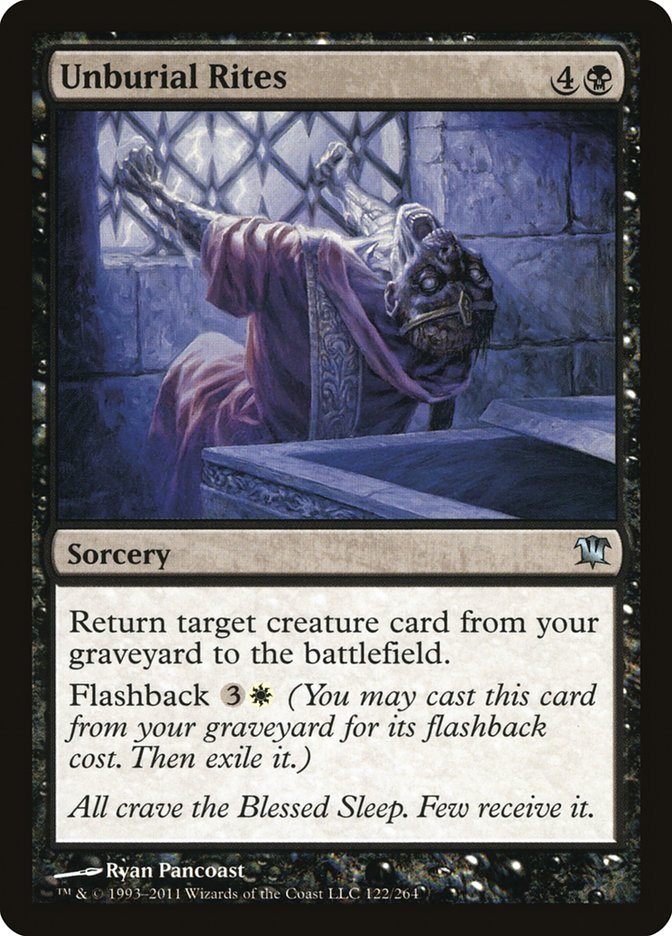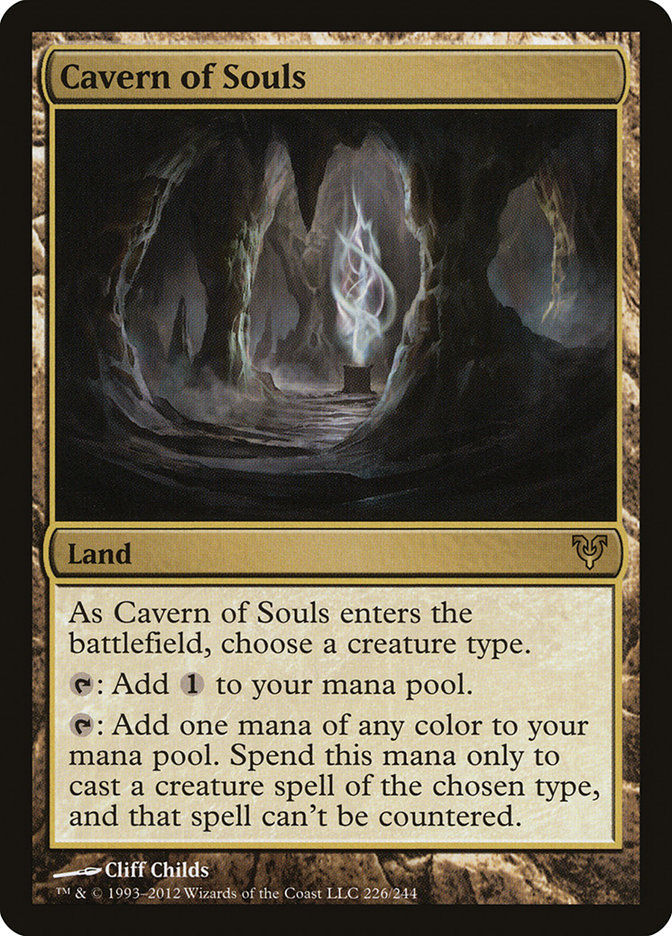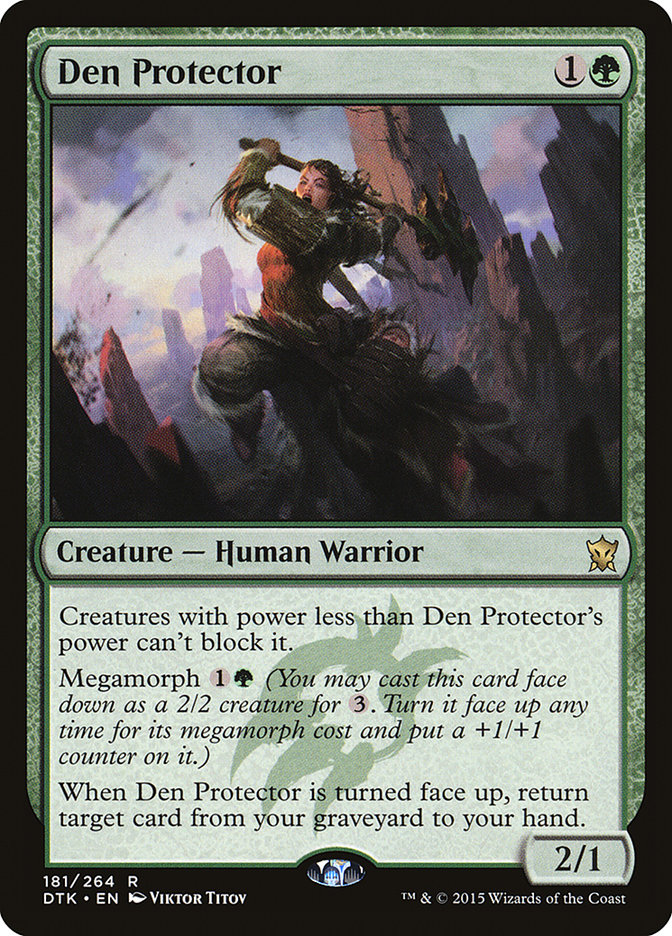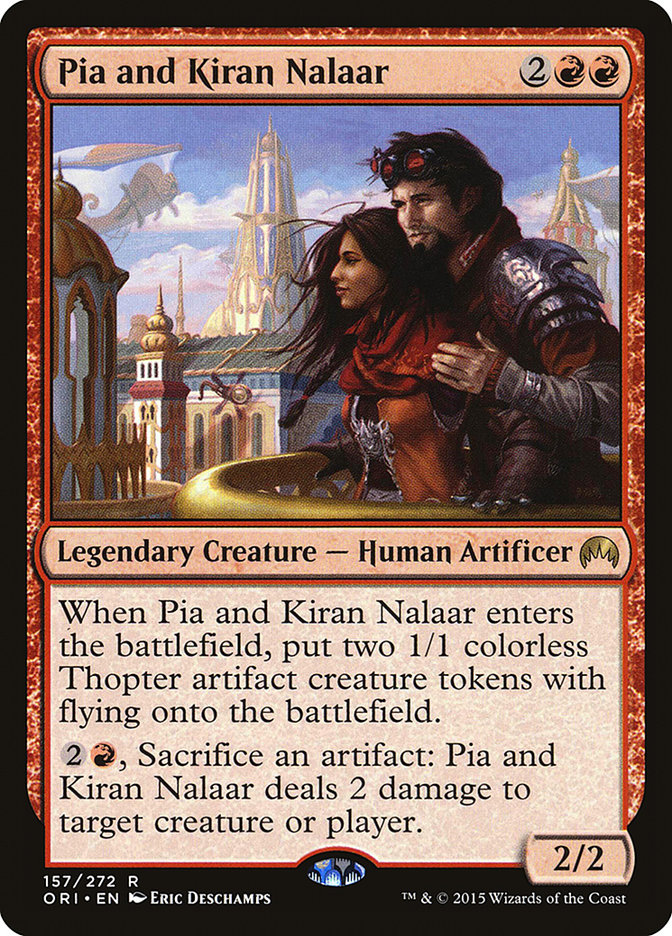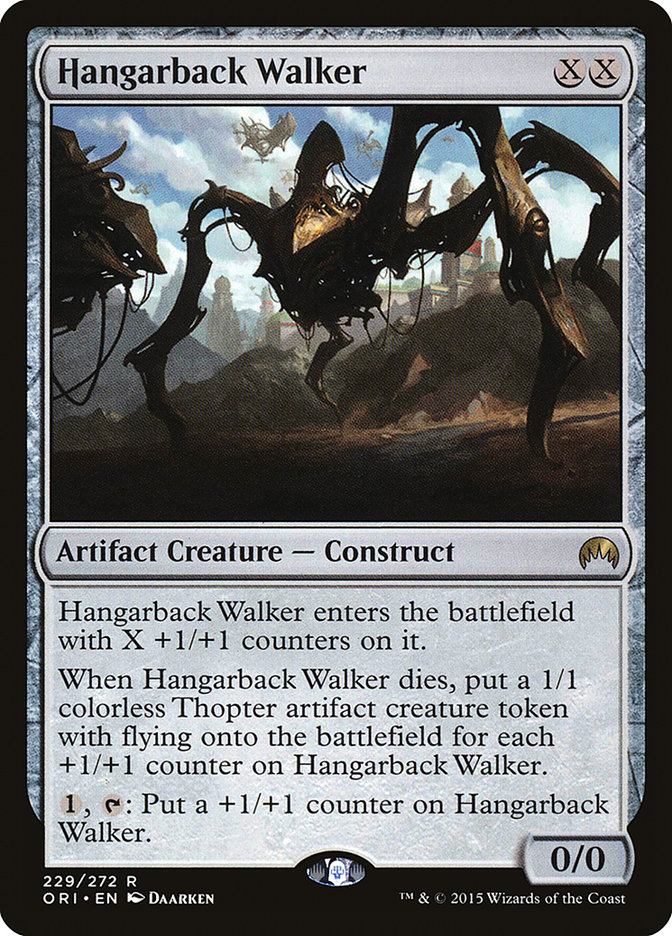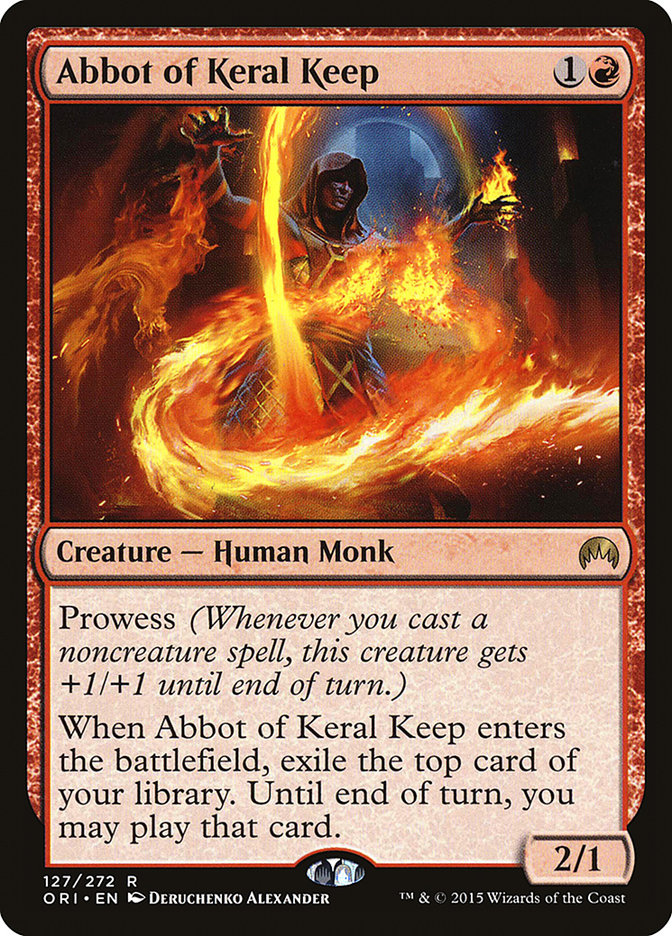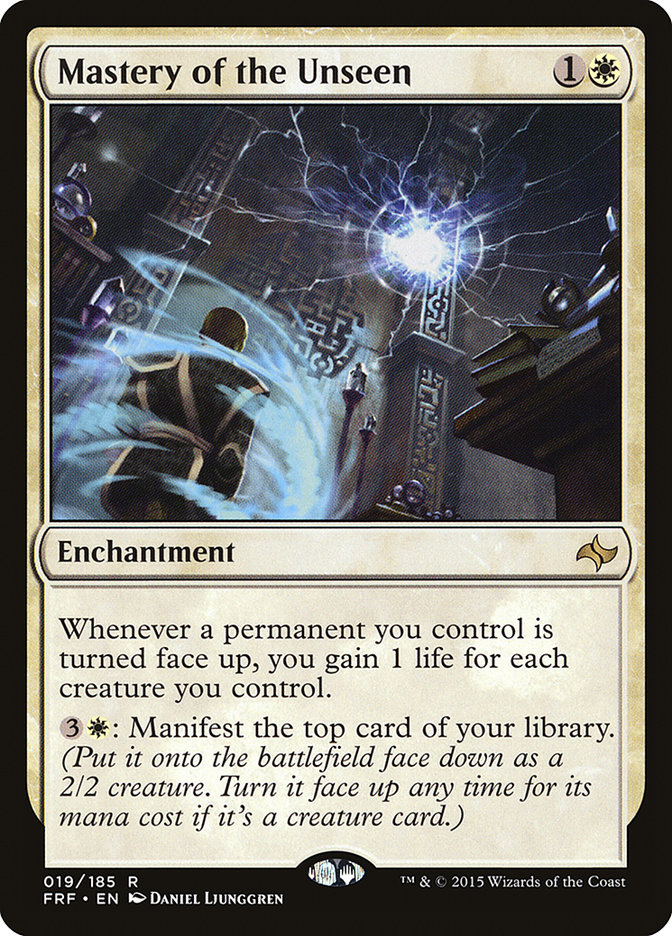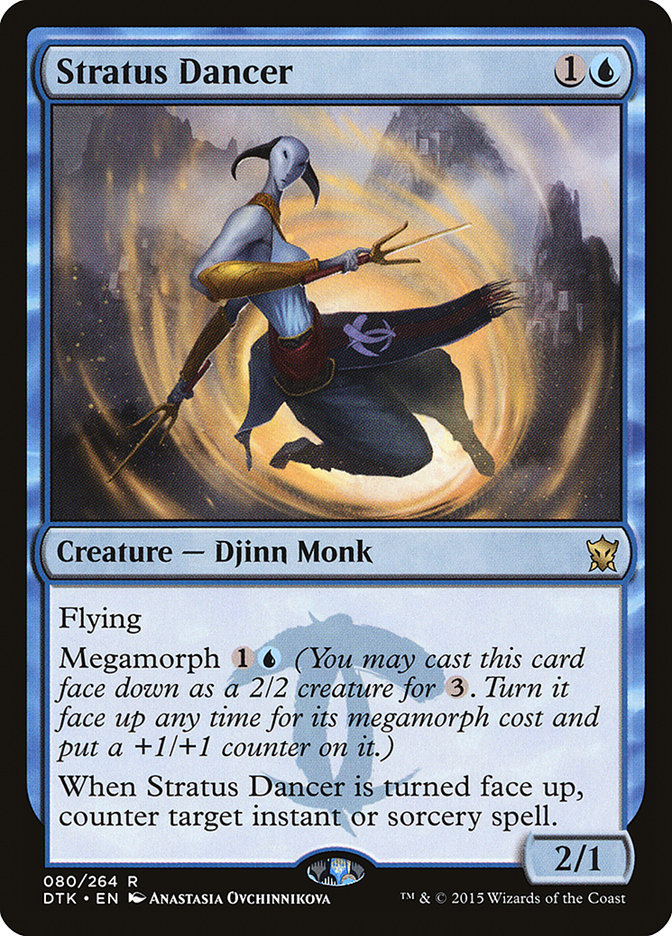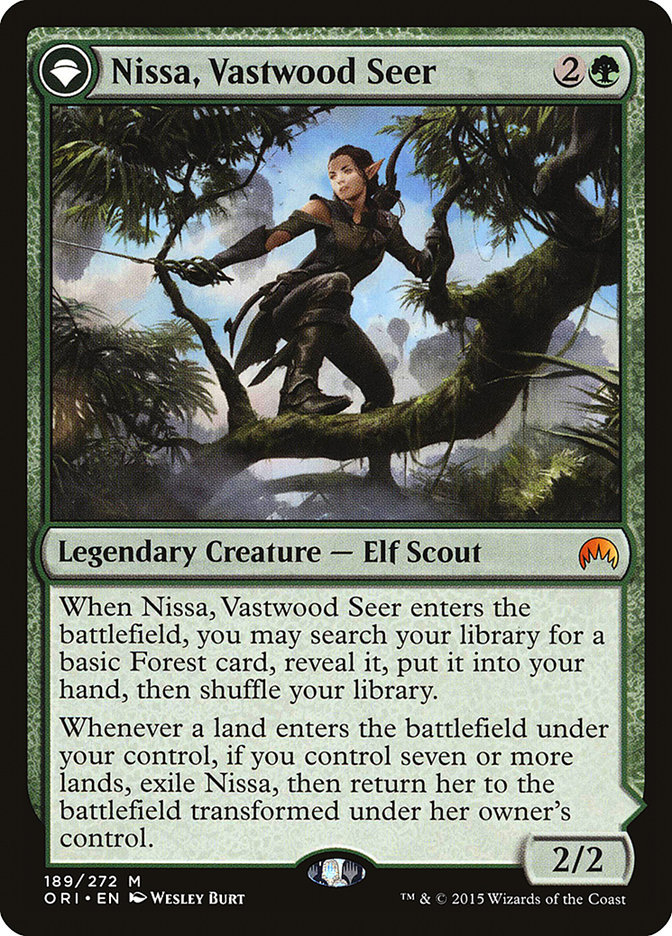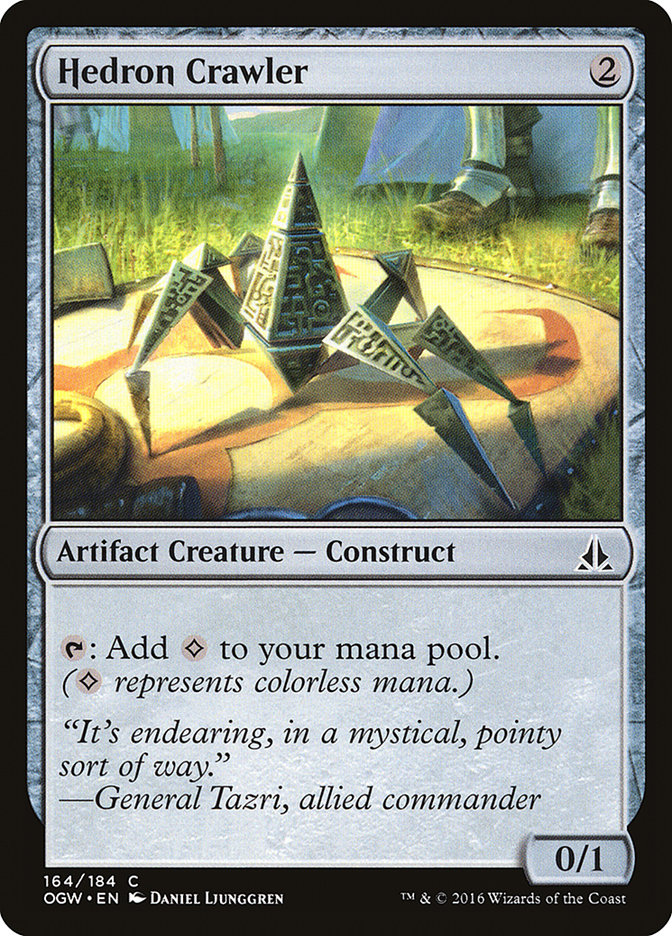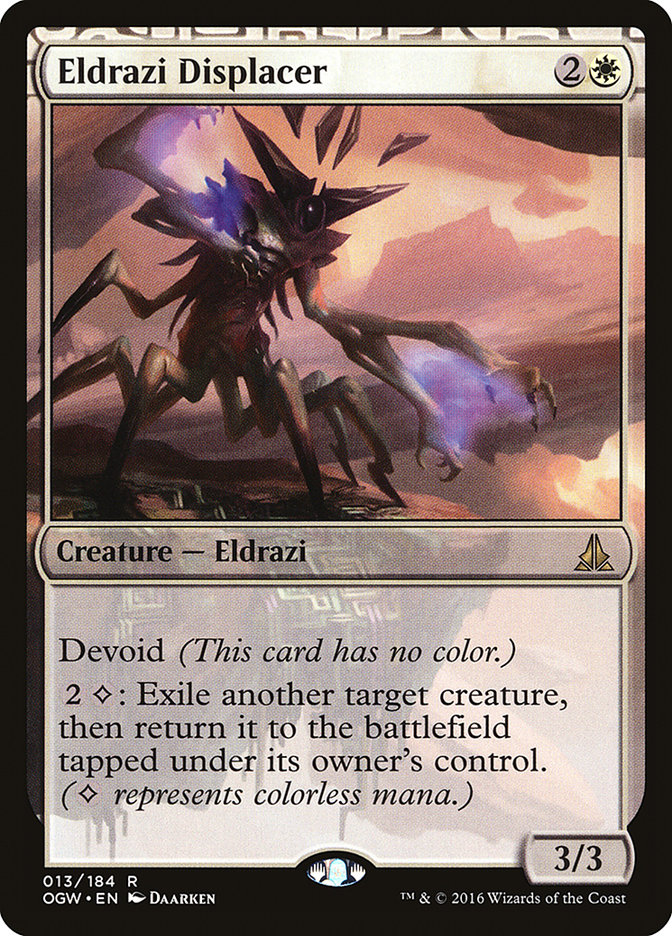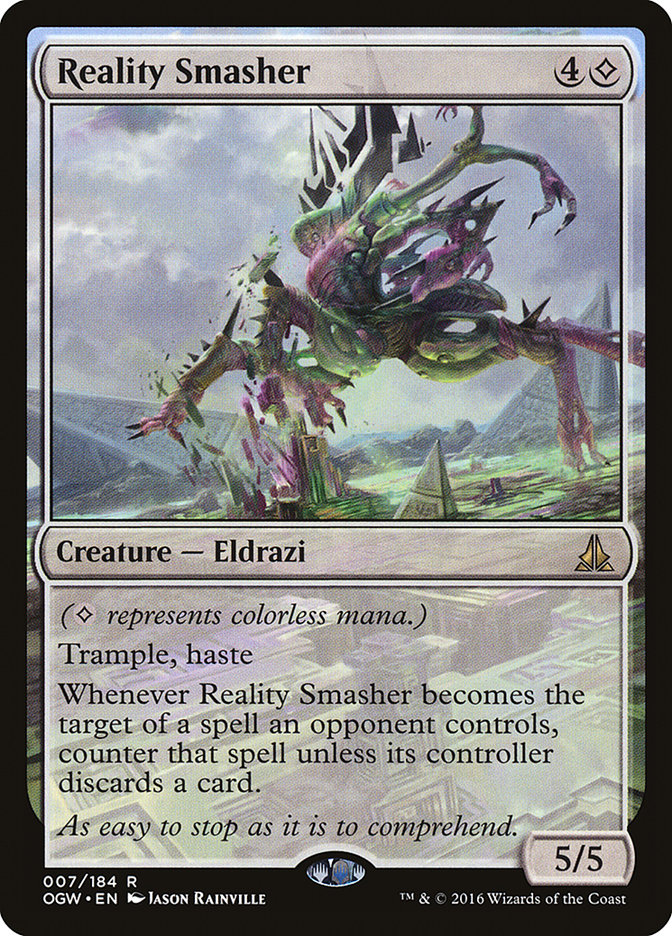 Mantis Rider, and Combo existed with Rally the Ancestors. The format has been really diverse and all strategies are certainly present, but the nature of card advantage in this format has been among the most interesting driving forces.
Mantis Rider, and Combo existed with Rally the Ancestors. The format has been really diverse and all strategies are certainly present, but the nature of card advantage in this format has been among the most interesting driving forces.
A long time ago, in a world of Unburial Rites and Acidic Slimes, I realized that the most interesting thing for Standard to be about, to my mind, is fluid card advantage. What I mean by that is that at around three-and-a-half mana, any card you play is worth more than one card.
This is contrasted with the early days of Magic, where cards traded on a one-for-one basis for the most part, and the way to get ahead was to literally draw more cards than your opponent, or to resolve some sort of sweeper.
These days, things are less clear-cut. When creatures started looking like Snapcaster Mage, Thragtusk, and Acidic Slime, especially when counterspells don’t work because of things like cascade, Eldrazi triggers, or Cavern of Souls, raw card advantage doesn’t matter as much, and the game becomes about power and efficiency.
Interestingly, this transition is, I think, the heart of what AJ Sacher was getting at in his widely criticized and deeply misunderstood “Stock Mana Theory,” the idea that the game has shifted to be about proper usage and managing of mana rather than proper manipulation of card advantage as the defining resource.
When Standard shifted to focus on high-impact creatures that don’t come with explicit built-in card advantage, like most Dragons, or Mantis Rider, or (in some contexts) Siege Rhino, I think I feared a move away from this idea, but these days the world seems to revolve around things like Den Protector, Kolaghan’s Command, and Pia and Kiran Nalaar. Even the best two-mana creatures like Jace, Vryn’s Prodigy; Hangarback Walker; and Abbot of Keral Keep defy traditional visions of card advantage.
These days, a lot of Standard feels like it’s about the graveyard. Den Protector; Kolaghan’s Command; Jace, Vryn’s Prodigy; Deathmist Raptor; Ojutai’s Command; Rally the Ancestors; Become Immense; Treasure Cruise; Tasigur, the Golden Fang; Goblin Dark-Dwellers; Bloodsoaked Champion–the list of high-impact cards in Standard that care about the graveyard in one way or another just goes on and on, and there are almost no efficient ways to attack the opponent’s graveyard.
I actually think that’s pretty awesome. It leads to a format where both players usually have the ability to make multiple different plays, and everything you’ve done over the course of the game matters late into the game.
Oath of the Gatewatch hasn’t fundamentally changed this, but what we’ve seen is what I’d characterize in hindsight as a natural progression. If everyone always has plays because the graveyard is so live that people don’t tend to run out of cards or profitable things to do with mana, then having plays isn’t what the game is about. Instead, the game is about making big plays. Think of it like limiting reagents in chemical reactions; the game will focus on whatever resource is most constrained.
Historically, the “limiting reagent” often has been cards, or in other cases, time battling against cards, where the deck with the lower curve is trying to end the game before it runs out of cards and the deck with the higher curve wins.
These days, there’s enough recursion and enough late-game mana sinks that the deck with the lower curve isn’t guaranteed to run out of things to do with mana in the late game, which means that the inevitability of the higher-curve deck is a little less inevitable. The B/W Warriors deck I played last season was a great example of that. I had one of the lowest curves in the format but could often grind out people who resolved multiple Dig Through Times by spending my mana in the late game on things like dash, returning Bloodsoaked Champion, or activating Shambling Vent or Mastery of the Unseen.
When you don’t run out of cards in hand, it’s a lot more likely that superior board presence will be the focus of the game. This is where we get to what I feel like are the defining cards of the moment: Collected Company and Reflector Mage. Collected Company is the most versatile and explosive way to deploy creatures to the battlefield, and Reflector Mage is a fairly reliable huge mana swing, which, when the game is about efficiently spending mana, is exactly what you’re looking for.
The Four-Color Rally deck is the Level One perfect place to take advantage of these cards and feels like it plays perfectly to what this format is about. It uses mana efficiently, deploys creatures well, doesn’t try to grind (because you can’t run your opponent out of resources anyway) but interacts with bounce, the most efficient way to fight over battlefield presence. It has an exceptional way to end the game in a world where that can be challenging. It also directly punishes people who try to play more interactive games against it if they rely on traditional removal because of how well it uses its graveyard. It feels like the perfect solution to the format because I think it is, objectively, the best natural way to respond to the unique incentives offered by this Standard format in particular.
Creatures (28)
- 4 Nantuko Husk
- 4 Elvish Visionary
- 3 Grim Haruspex
- 3 Sidisi's Faithful
- 4 Jace, Vryn's Prodigy
- 3 Catacomb Sifter
- 4 Zulaport Cutthroat
- 3 Reflector Mage
Lands (24)
Spells (8)

Fortunately, the nature of Magic is to attack such Level One thinking. A deck that’s favored by the nature of the card pool is attacked by the choices people make within that card pool, since everyone directly tries to beat you.
This means that Anafenza, the Foremost and Kalitas, Traitor of Ghet are pushed into as many decks as possible, and strategies that look for any weakness in Rally, like maximizing aggressive fliers in R/B Dragons or some builds of Jeskai, rise to attack Rally.
This weekend, it felt like most pros converged on Bant Company. I think the idea was that it has similar structural advantages to Rally; it uses Reflector Mage and Collected Company well, but it’s a little more proactive. The fact that its cheap plays are individually higher-impact that Rally’s cheap plays mean your opponent is more likely to be playing out-of-position early. This makes it harder for them to find windows to lean on targeted answers to Collected Company like Hallowed Moonlight and Dispel, both of which are everywhere. This also decreases the incentive to build toward Rally the Ancestors specifically if you can find other ways to win the game, which Collected Company by itself is actually pretty well-suited for.
I think this was a pretty good conclusion to reach. Paul Rietzl pointed our team to the Bant Company deck a few days before the tournament, and several of us started playing Leagues with good results. When it came time for the actual MOCS Playoffs, though, it became clear we were playing last week’s deck.
In leagues, I felt like the deck was doing good things, but I had problems with R/B Dragons for the same reason Four-Color Rally has problems with them. I have no way to interact with the fliers they go wide with other than racing, and sometimes I can race, probably more often than Rally, but most of the time I couldn’t.
In the MOCS Playoffs, I played against a lot of mirrors. I had a Stratus Dancer in my maindeck and another in the sideboard, and I had a Nissa, Vastwood Seer in my maindeck, and these cards felt great in the ground stalls the Deathmist Raptors would often lead to.
Eventually, I played against Chris Fennell, who was playing Bant Company with Stratus Dancers and Eldrazi Skyspawners. My draws were terrible, but it was also clear that he’d come prepared for the mirror and I hadn’t. He still had the essentials to lock up the ground, and I had no way to stop his 2/1 fliers. Nissa, Vastwood Seer, which had previously been my trump, was now no longer what the game was about.
Others who did even better than Chris went a step further. While he got an edge by taking to the skies, players like Brad Nelson combined Eldrazi Skyspawner with Wingmate Roc to trump the battle in the skies.
In the end, after a field of Bant players leveled each other, none of them ended up actually taking the top two slots to qualify for the MOCS Championship. Ultimately it came down to a fairly conventional OGW Rally deck (with three Ayli, Eternal Pilgrim, which I particularly like in a field full of Sylvan Advocate) defeating an unorthodox Ramp deck with Hedron Crawler.
The Ramp deck might have actually been the right way to build the deck for a field full of Collected Company decks, but it just seems really odd to me. My intuition is that if you’re only going to play green, it’s better to work to accommodate Wastes and Ruin in Their Wake to make the ramping more resilient and play better with Shrine of the Forsaken Gods. I can believe that it’s too hard to fit enough Wastes with all the copies of Shrine of the Forsaken Gods and Sanctum of Ugin , but it just doesn’t look right.
Regardless, what seems to be happening is that Four-Color Rally and Bant Company, thanks to additions like Reflector Mage, are now good enough at holding off very aggressive ground assaults that people have had to work to go over them, playing less-aggressive threats in a vacuum because they have to pay for flying. This means that aggressive decks have had to slow down by just enough to give ramp decks time to punish the sea of midrange the format has become.
Honestly, I think this format is still in its infancy. Modern fell apart because Wizards tried to push Eldrazi hard enough to make them good in Standard, where they don’t have the benefit of lands that tap for two mana, but we’ve still barely gotten around to making them work.
What we’ve done is pushed the previous formats incentives and structures to their natural conclusion. What this weekend showed us is that the endpoint of that format and direction is weak to Eldrazi Ramp, so what we’ll see is a shift as people explore various ways to build the Ramp decks, how they prepare for the mirrors, and how others shift, likely either toward aggression or counterspells to make up for that change in the metagame.
Given how much more I think the hive mind has invested in various Collected Company strategies than it has in perfecting Ramp in the new Standard, I think that’s where the biggest edge from tuning currently lies, and it may also just be the right place to be in the metagame in the short term.
Ultimately, I expect that the next big breakthrough is going to be finding the best home from some combination of Thought-Knot Seer, Eldrazi Displacer, and Reality Smasher, but in the short term, I expect that it’s the best World Breaker deck that will shake up the format and stop it from shifting to a point where it’s all about Wingmate Roc flying over a tide of green creatures.
What I don’t have, at the moment, are solutions. This is about framing the question and understanding the incentives and forces at play. The first spot I’m drawn to is trying to figure out the best way to ramp. What I can offer is a list that I’m sure will be bad, but that I expect to use as my starting point:
Creatures (20)
- 1 Dragonlord Atarka
- 1 Ulamog, the Ceaseless Hunger
- 4 Drowner of Hope
- 4 World Breaker
- 2 Reflector Mage
- 4 Eldrazi Displacer
- 4 Sylvan Advocate
Planeswalkers (1)
Lands (26)
Spells (13)

I think this deck will be bad because I’m trying to do too many things, but that’s by design. I want to see how each of the pieces work, see how far I can push the mana, and see how all the different pieces play together. Beyond that, I don’t actually think this is hopeless. Sylvan Advocate comes down early and plays well with both Kozilek’s Return and ramp spells. It buys time against aggressive decks for my bigger cards to come online. Eldrazi Displacer has all the best tools: lots of colorless mana, Reflector Mage, Drowner of Hope, World Breaker, and Dragonlord Atarka.
The goal is to have just enough early- and mid-game to stall and just enough late-game to trump. In reality, this will probably just result in really clunky perfect “sample hands” full of awkward spells that I can’t cast, but this is presented to highlight how I work: start ambitious, try to do everything, and then prune the pieces that don’t pull their weight.
This weekend is another Modern event in #SCGLOU, but depending on how that goes, Standard may be the most interesting format going forward.

